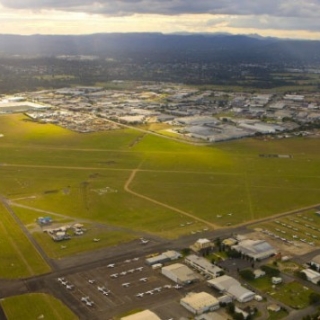
By Daniel Mellish, Specialist Consultant – Property and Finance
Part 1 of this blog, accessible here, outlined the guidelines for planning, assessing and developing aviation related infrastructure. This part 2, discusses funding approaches and sources, and common questions and methods for assessing the feasibility of aviation infrastructure projects.
Sources of funding for an aviation infrastructure project can vary according to the nature of the project or asset, the company/borrower itself and the structure chosen for the project. Funds may come from:
- working capital – or existing cash, if lucky enough to be in that position
- debt – banks or other investors
- equity – retained earnings or possibly a new equity issue
- where applicable, government funding - such as regional development funds
As for structure, a common question is whether the project or asset is substantial or separable enough to be funded off balance sheet in a special purpose vehicle (SPV) or remain on balance and utilising existing corporate facilities.
When assessing the project (usually a feasibility or business case), in aviation this could be for a simple replacement asset, or a large growth project such as a new terminal, aviation business park, or new freight facility. It may or may not directly generate revenue, with the latter including new safety or compliance requirements. Or it could generate benefits to a community in a multiplier effect, such as indirect employment opportunities in other industries including accommodation. These all bring different methods, degrees and manners of assessment.
In doing the financial assessment, the available project options should always include different suppliers, ways to deliver the asset especially staging and ownership structures for the asset (buy versus lease). It should also be compared with a “do nothing” option, i.e continue using the existing asset(s), potentially with increased maintenance requirements.
The decision should not be solely based on the highest financial metric – whether that is Net cash, Net Present Value (NPV), Internal Rate of Return (IRR) or Payback period, depending on the metrics favoured by the organisation. If using IRR, any internal IRR hurdles for the project should be realistic, periodically updated, benchmarked and agreed with all key stakeholders.
Whilst Return on Investment (ROI) and Return on Capital Employed (ROCE) are common in investment circles, especially listed companies, for many airports, Return on Assets (ROA) is fast becoming a more important measure. This is especially the case as asset values grow, relatively cheap debt funding prevails and excess working capital / cash is reinvested into the organisation.
Sometimes, especially for non-revenue generating projects or assets, it’s the “least negative” cash result, or lowest cost, which is important. However, the lowest cost should also not be the entire determining factor. Other risks need to be considered, including any operational interruptions, counterparty/supplier or even political and reputational risks.
Aviation Projects has extensive experience in project feasibility analysis, budgeting and business case preparation across a range of Australian airports, as well as other capital-intensive industries. We can help you plan or achieve your project and provide insights into what others are doing in these areas. If you’d like any further information, please contact Daniel Mellish on (07) 3371 0788.
Tags: Infrastructure, Investment, Feasibilities, Project Assessment
